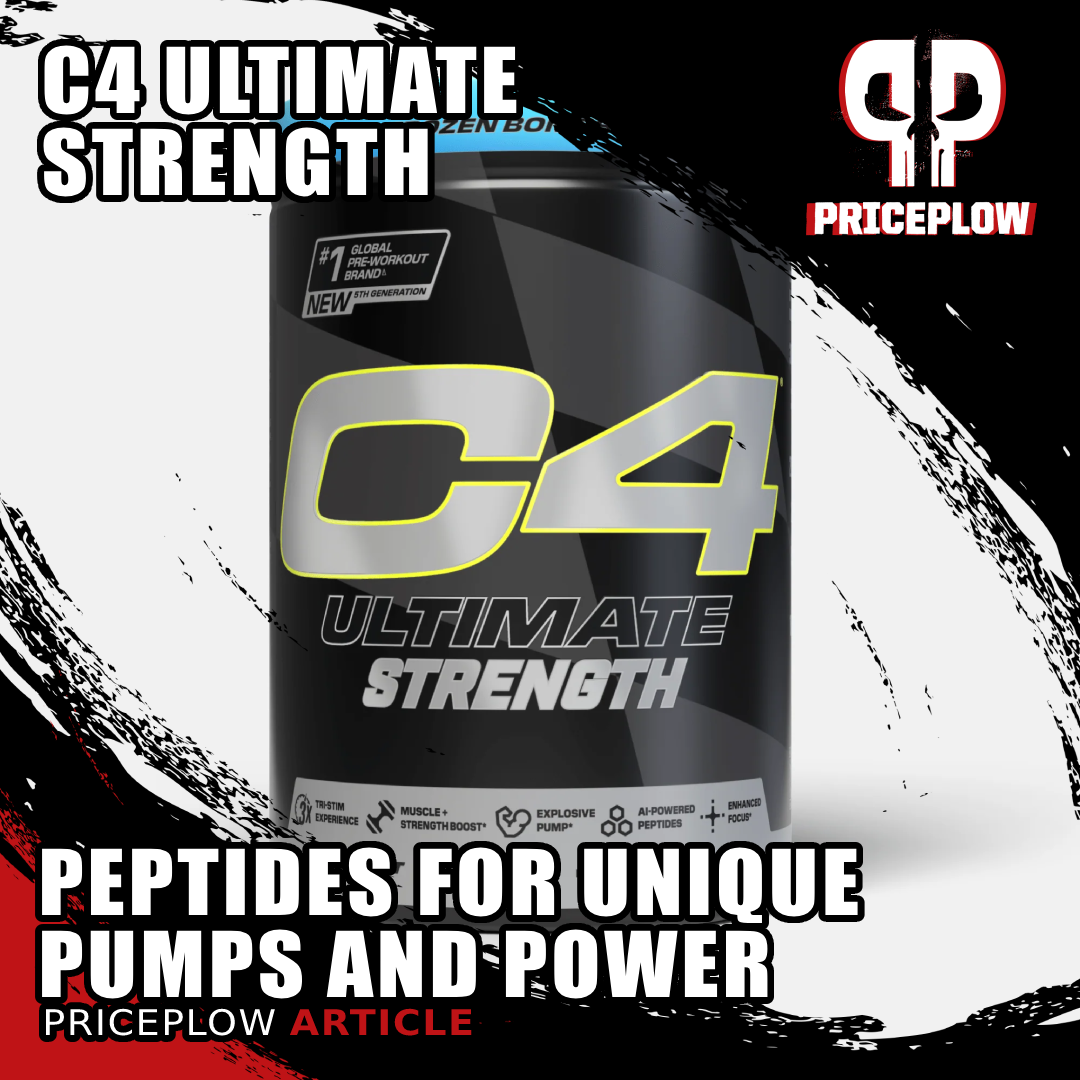
C4 Ultimate Strength: The best C4 formula we've ever seen! With TWO peptides (PeptiStrong & PeptiPump) and an incredible stim blend, there's energy, strength, performance, & pump
There's currently one really hot buzzword in the supplement and pharmaceutical industries alike. That word is peptides.
Thanks to breakthroughs in computing power and statistical analysis, science has now identified thousands of amino acid chains that have outsized effects on important aspects of human physiology.
Last year we wrote a lot about PeptiStrong, a fava-bean-derived peptide network that has some incredible pro-anabolic effects. PeptiStrong was developed by Nuritas, a biotech company that used artificial intelligence to find the best source for the peptides they sought.
But now, thanks to Nutrabolt, another Nuritas peptide has hit the market, and it's in a pre-workout series we've all come to respect:
C4 Ultimate Strength – A Powerful Pre-Workout with PeptiStrong and PeptiPump
The product line we're talking about is C4 Ultimate, and the product we're specifically zeroing in on today is C4 Ultimate Strength, which, to us, is the most exciting pre-workout of all of the ones we've seen in Nutrabolt's new C4 5th Generation Launch of 2024.

Nutrabolt has announced what PeptiPump is inside of the new C4 Gen5 series. What is it?! An ACE Inhibitor peptide network!
This is in part because it includes PeptiPump, a peptide network focused on creating massive pumps through vasodilation, in addition to the PeptiStrong that was in the previous generation.
So now we're getting both of these incredible peptides in the same product.
The release of this C4 generation is a watershed moment for the nutritional supplement industry. It marks the beginning of what we think is destined to be a very long and very rewarding chapter in supplement science – the era of peptide dominance.
Of course, peptides aren't the only thing in C4. This formula also features an impressive array of familiar nutraceuticals and botanical extracts.
Let's get into how this works, but first, check the PricePlow news and deals:
Cellucor C4 Ultimate Strength – Deals and Price Drop Alerts
Get Price Alerts
No spam, no scams.
Disclosure: PricePlow relies on pricing from stores with which we have a business relationship. We work hard to keep pricing current, but you may find a better offer.
Posts are sponsored in part by the retailers and/or brands listed on this page.
This area is reserved for Team PricePlow's upcoming videos.
Subscribe to our channel and sign up for notifications so you catch it when it goes live!
C4 Ultimate Strength Ingredients
In a single 27.5 gram (1 scoop) serving of C4 Ultimate Strength, you get the following:
Endurance & Performance Complex – 10,650 mg
-
CarnoSyn Beta-Alanine – 3,200 mg
Beta-alanine is one of the supplement industry's favorite ergogenic aids – an ergogenic aid being defined as any substance, device, technique, or treatment that enhances an individual's energy utilization, efficiency, or performance during exercise.
Together with the amino acid L-histidine, beta-alanine is a precursor to a dipeptide molecule called carnosine, which the body uses to detoxify lactic acid in muscle tissue.[1] Since lactic acid (AKA lactate) accumulation is a major driver in the onset of muscular fatigue, slowing down its building via beta-alanine supplementation is an effective endurance-boosting strategy.
The peer-reviewed literature indicates that supplementing with beta-alanine can improve athletic performance by extending an individual's time to exhaustion,[2,3] increasing power,[4] and, when taken long term, encouraging a lean body composition.[5]
Two big meta-analyses of the literature on beta-alanine found that for many different kinds of exercise and sports performance, a daily 3,200 mg dose of beta-alanine can greatly increase endurance and reduce fatigue. However, it appears that beta-alanine does this best for exercise conducted at a specific level of intensity – that which can be sustained for 30 seconds to 10 minutes.[1]
Why we like CarnoSyn
CarnoSyn, a patented formulation of beta-alanine, has been developed and marketed by Natural Alternatives International. Widely recognized within the supplement industry for its superior quality, it stands out as one of the premier brands of beta-alanine available.
Natural Alternatives maintains a strict policy of quality control, licensing the use of their ingredients only when appropriately dosed. This commitment to quality is evident in C4, where users benefit from the clinically-validated 3,200 mg dose.
-
VELOX patented performance blend
VELOX is a blend of amino acids patented[6-9] by the Kyowa Kirin company -- here in America, we work with Kyowa Hakko USA, and they actually manufacture Velox right here in the states in Missouri! In case you don't know, Kyowa is renowned for the purity and quality of its amino acid supplements, and actually pioneered a process of amino acid fermentation that is now the industry standard.
The idea behind combining these two specific aminos, namely citrulline and arginine, that they have a synergistic effect on your body's production of nitric oxide (NO).[10-12] That is, the combination of these aminos works better to upregulate NO than either one alone.
The basic reason for this is that citrulline inhibits an enzyme called arginase, which ordinarily degrades arginine before it can be digested and absorbed by the body.[13] This makes arginine more effective, plus, as we'll see, citrulline has NO-boosting effects of its own.
-
L-Citrulline – 3,000 mg
Citrulline is classified as a non-essential amino acid, which means that your body can make citrulline on its own, so long as it's supplied with the necessary chemical precursors. The catch is that there's a limit on how fast your body can synthesize it – and the amount you need, especially under circumstances like injury or illness, dramatically outstrips your body's ability to make it.
On its own, a 2.4 gram dose of Kyowa Quality citrulline was also enough to significantly improve multiple markers of fatigue, as assessed immediately following exercise using the visual analog scale (VAS).[14]
So how does citrulline work? It increases your body's ability to synthesize nitric oxide (NO).[2] Although arginine was actually the standard NO-boosting ingredient for a long time, citrulline gradually supplanted it owing to the later's superior oral bioavailability.[3] But like we said above, the combination of citrulline and arginine makes arginine more effective, by inhibiting arginase and sparing arginine from the first pass effect.[4]
The reason we want more NO is that NO triggers vasodilation, a phenomenon where your arteries grow in diameter, allowing a greater volume of blood to flow through them, and improving delivery of blood to microvessels that are sensitive to changes in circulatory status.
With circulation improved, oxygen and nutrients can reach your cells more efficiently, leading to better athletic performance. At the same time, the improved circulation also helps your body get rid of metabolic wastes like lactic acid, leading to improved recovery from exercise.
With the improved arginine status, we get improved nitric oxide levels, better blood flow and circulation... and ultimately, better performance![11]
It's no wonder, then, that studies on citrulline have demonstrated its ability to:
- Increase cellular oxygen utilization, thus improving performance at max intensity[5]
- Prolong athletic endurance – one study found that citrulline supplements enabled subjects to perform 53% more bench press reps than the placebo group[15]
- Decrease post-exercise soreness, by roughly 40%.[15]
-
L-Arginine – 3,000 mg
So what benefits does arginine give us? Since your body actually converts citrulline into arginine before the arginine gets turned into NO, it's safe to say that all the benefits of citrulline supplementation are associated with arginine as well.
The conversion pathway looks like Citrulline → Arginine → NO. So with this combined blend of amino acids, you're definitely getting tons of NO upregulation.
An ingredient made in the USA!
You can read about Kyowa Hakko USA's American facility in our article titled "Kyowa Quality: Trusted Supplement Ingredients Made in the USA" and "Amino Acids Made in the USA: Kyowa Quality's Citrulline, Glutamine, and Arginine". We love that Nutrabolt is leaning into this American-made ingredient duo!
-
-
BetaPower Betaine Anhydrous – 1,250 mg
Betaine, AKA trimethylglycine (TMG), is an ergogenic aid like beta-alanine, but it uses a distinct mechanism of action.
Methyl donor
"Ergogenic aid" is a pretty broad category, and there are many different mechanisms of action that can create an ergogenic effect. One of the most common, though, is the ability to increase your cells' production of adenosine triphosphate (ATP), the energy currency that your cells use to perform all their metabolic tasks. You can think of ATP as your cells' gasoline, so it should make intuitive sense that giving them more ATP can translate to improved cognition and better athletic and cognitive performance.
And as it turns out, this is precisely what betaine does – it upregulates ATP by enhancing mitochondrial respiration.[16]
Betaine increases ATP synthesis by donating methyl groups (chemical formula CH3) to sites in the body where those methyls are required for the performance of vital cellular functions.[17] In fact, among all methyl donors known to science, betaine is one of the most potent.[18]
One of methyl group's most crucial roles is helping the body regulate blood levels of homocysteine, an amino acid that's generated when your body metabolizes another amino acid called methionine. If homocysteine levels rise too far, the result is a substantially elevated risk of cardiovascular disease,[19] so we want to keep that under control as best we can.
Since homocysteine regulation is highly dependent on methylation, betaine supplements can significantly decrease blood homocysteine.[20] This means betaine supplementation can be a great investment in your long-term cardiovascular health and athletic performance.
Osmolyte effects
Methyl donation isn't the only way that betaine can improve performance, though. It's also an osmolyte, meaning it can positively affect cellular water balance.
The placebo effect started strong with this group. But... the real gains obliterated placebo in due time with betaine!
More specifically, betaine can push extra water into your body's cells, leading to a desirable state called cellular hyperhydration, in which cells benefit from improved nutrient availability[21,22] and are more resistant to the debilitating effects of heat.[23]
Betaine studies
At 2.5 grams or more (which we don't have here), the peer-reviewed literature on betaine shows that it can:
- Increase strength[24,25]
- Increase power[23,24,26-28]
- Improve body composition[22,29,30]
In one particularly impressive study, collegiate women who took betaine alongside weight training lost 4 pounds more body fat than the placebo group.[29]
So with that said, we're going to have to look forward to a Nutrabolt-led muscle builder to help top off the 1.25 grams inside here.
-
PeptiPump Bioactive Lentil Peptides – 200 mg
PeptiPump is a novel peptide network identified and isolated from lentils, by Nuritas with the aid of AI-driven research tools. It consists of peptides that have been shown to inhibit angiotensin-converting enzyme (ACE), a mechanism with significant vasodilatory effects. This mechanism's lower blood pressure is why pharmaceutical ACE inhibitors are a prescription treatment for hypertension.
Nutrabolt has announced what PeptiPump is inside of the new C4 Gen5 series. What is it?! An ACE Inhibitor peptide network!
Because ACE inhibition is such a powerful strategy for increasing muscle blood flow and oxygenation, food-derived ACE-inhibiting peptides have long been discussed as a possible tool for improving circulatory dynamics.[31-33] The big issue that needed to be solved was bioavailability – and PeptiPump appears to have solved that problem, as it's been shown to survive gastrointestinal digestion and absorption.[34,35]
This is Nuritas' complement to PeptiStrong, a more anabolic-focused peptide that we'll be discussing below.
As of March 2024, we still don't have any peer-reviewed, journal-published research on PeptiPump itself. However, Nutrabolt and Nuritas released a statement explaining what the ingredient was, and we posted it in our article titled "PeptiPump: A Lentil Protein Hydrolysate Containing Bioactive Peptides".
A study published in 2023 titled "Development of lentil peptides with potent antioxidant, antihypertensive, and antidiabetic activities along with umami taste"[36] discusses some of the underlying research that may be at play here, but we look forward to research specifically performed on PeptiPump itself. When it's out, we'll update the article linked above.
Muscle & Strength Matrix – 8.05 grams
-
Creatine monohydrate – 4 grams
Although we haven't run the numbers, we're willing to bet that more papers have been written about creatine than any other dietary supplement.
The reason is simple – creatine works, and it works well. Remember what we wrote in the betaine section about creating ergogenic effects through ATP upregulation? Well, that's exactly what creatine does, too.[37-40]
Increasing ATP stores, and hence cellular energy availability via creatine supplementation has been shown to do the following:
- Increase power[41,42]
- Promote muscle gain[43-46]
- Increase sprint speed[47-49]
- Augment cellular hydration[50]
- Reduce fatigue[51-53]
- Improve sense of overall well-being[54-56]
- Enhance cognitive performance[57,58]
- Increase serum testosterone[59-63]
Besides the few dozen studies we've covered in this impressive list, there are, without exaggeration, hundreds of similar peer-reviewed studies and meta-analyses all showing the same thing: creatine is a totally kickass supplement for performance, both mental and physical.
The 4 gram dose is adequate - and we have more coming from creatine nitrate!
You've probably noticed that Nutrabolt C4 uses four grams of creatine, instead of the usual five. Don't worry, though – there are two things happening here.
- First, we have more creatine coming from the 1.5 grams of creatine nitrate, which will fill in that fifth gram.
- But even if that weren't the case, this is still an efficacious dose! Data from the National Health and Nutrition Examination Survey (NHANES) indicates that Americans get, on average, 0.54 grams of creatine per day from food, with an average daily creatine loss of 2 grams per day.[64]
This means that even if you got zero grams of creatine per day from diet, a 4-gram dose would still be twice as much as you need to cover your daily creatine requirements. Yet Nutrabolt didn't leave that to chance, they continue to rely on creatine nitrate which brings creatine alongside the nitrate-based pumps.
Bottom line, this dose on its own works great, but C4 Ultimate Strength isn't done yet -- there's more creatine on the way.
-
PeptiStrong bioactive fava bean peptides – 2,400 mg
While PeptiPump is focused on enhancing blood flow, PeptiStrong is Nuritas' more anabolic peptide network.
Boost your muscles' natural performance and recovery abilities with PeptiStrong, a natural anabolic peptide network found in fava beans.
Now that we're talking about anabolic mechanisms and muscle growth, we should be careful to distinguish between dietary protein and peptides. While peptides are technically proteins, we use the term peptide as a kind of short-hand to refer to proteins that have been identified for their informational effects on human physiology. By altering epigenetic and hormonal factors, peptides can have dramatically non-linear effects on human health.[65-67]
By manipulating these key bio-informational levers through peptide supplementation, we can help alter body composition without relying on changes to caloric intake.
And that's exactly what PeptiStrong has been shown to do. It's made up of over 400 different peptides[68] that were selected for their ability to upregulate mammalian target of rapamycin (mTOR), a switch that controls the synthesis of new muscle tissue.
Human study 1: PeptiStrong's can increase strength gains during recovery from muscle damage
In a randomized, double-blind, placebo-controlled study from 2023, researchers recruited 30 healthy, recreationally-active men between the ages of 30 and 45. Subjects completed a baseline strength test on day 1 of the study period, and were then given either 2.4 grams of PeptiStrong or a placebo every day for two weeks.[69]
On day 15, subjects stopped their prescribed treatment, and then completed a followup physical fitness assessment, which consisted of a stationary bike warmup, followed by a knee flexion and extension test designed to measure knee strength. The test consisted of 5 warmup reps, gradually increasing from 60% to 100% of the subjects' maximum effort, followed by 2 sets of 5 reps performed at 100% effort.[69]
This particular leg exercise is known to cause significant muscle damage,[70,71] making it an ideal test to use for the purpose of assessing muscle growth and recovery.
The study authors tested the subjects' recovery progress by analyzing a variety of biomarkers 48 and 72 hours after the initial test day – that is, the 17th and 18th days of the total study period – while the supplementation regimen resumed.[69]
the PeptiStrong group recovered quicker and reported decreased soreness relative to the placebo group. "Delta Peak Torque/BW" means the alteration in peak torque capacity relative to body weight.[69]
At the 72 hour mark, the study authors found something astonishing – the PeptiStrong group had not only fully recovered from the muscle damage caused by the test, but had actually increased their strength above the baseline! By comparison, the placebo group had, at this point, not even fully recovered their baseline level of strength.[69]
Moreover, the PeptiStrong group scored significantly better on a fatigue index, which indicates a significant increase in muscular endurance.[69]
Finally, key biomarkers like myokine activity indicated that the PeptiStrong group had a heightened inflammatory response post-workout, which is a period where inflammation can actually benefit the anabolic response.[69]
The PeptiStrong group had higher blood concentrations of various myokines that centrally implicated in muscle growth.[69]
Even more amazing is PeptiStrong's effect on myostatin, a protein that is known to inhibit muscle protein synthesis:
The potential significance of this is hard to overstate – sports nutrition has been trying for decades to identify a viable myostatin inhibitor, which holds such incredible anabolic promise that it's the closest thing this industry has to a holy grail. Needless to say, it's absolutely amazing that we may finally have one in PeptiStrong.
Recovery after immobilization-induced muscular atrophy
Another study, also from 2023, looked at PeptiStrong's ability to maintain muscle tissue during forced immobilization. In this study, 30 young men were recruited to wear a plaster cast for 7 days. Since this cast completely restricted knee flexion, it was a way to create profound muscular atrophy in the affected leg.[72]
The study participants were randomized to take either 20 grams of PeptiStrong or 20 grams of milk protein daily. The idea behind this study design is to demonstrate PeptiStrong's disproportionate effects on muscle growth by dose-matching it with an ordinary dietary protein.
The researchers found that, once the casts came off, the PeptiStrong group recovered lost muscle four times faster than the milk protein group![72]
Relative to the milk protein (control) group, the PeptiStrong group had a significantly higher myofibrillar protein fractional synthesis rate (FSR), indicating a faster recovery from muscle loss.[72]
Despite the fact that both groups experienced approximately the same extent of muscle loss, once the subjects were able to move their legs, the PeptiStrong group recovered far faster.
-
Creatine Nitrate (as NO3-T) – 1,500 mg
Creatine nitrate comes with all the benefits of creatine that we discussed in the creatine monohydrate section, plus the benefits of nitrates. C4 is well-known for their use of creatine nitrate, and we're happy they kept it in the 5th Generation. This simultaneously gets us up to about 5 grams of creatine, but also adds in the pumps from the nitrate side:
Benefits of nitrates
Nitrates are desirable for the same reason as citrulline and arginine – they help the body create NO, albeit by a slightly different pathway. When nitrates are ingested, oral bacteria chemically reduce those nitrates to nitrites. When mixed with saliva, those nitrites can convert to nitric oxide in the acidic environment of the stomach and gastrointestinal tract, facilitated by enzymes like salivary peroxidase.[73-75]
Because supplemental nitrates can increase NO production, they come with the usual NO-related benefits:
- Better circulation[76]
- Increased aerobic efficiency[76-79]
- Increased strength[80,81]
- Enhanced cellular energy production[81-83]
Studies performed specifically on creatine nitrate
As for creatine nitrate itself, there are studies showing that it can support significant increases in bench press power,[84-86] leg press strength,[85] and leg press endurance.[85]
Additionally, it also has a great safety profile,[84,87] which isn't surprising given its mechanisms, ATP-boosting capabilities, and the fact that Nutrabolt has long relied on the ingredient without problems!
-
elevATP Ancient Peat and Apple fruit extract – 150 mg
ElevATP is made up of polyphenol antioxidants derived from ancient peat moss and apples, and identified for their ability to increase adenosine triphosphate (ATP) production.[88]
We love elevATP because, as we discussed earlier, ATP is crucially important for health and performance. Since it's the form of energy your cells actually use, your body's ability to supply those cells with ATP is a possible bottleneck on athletic performance. In those cases, supplements like elevATP can improve performance.
One 2016 study showed that participants who took 150 milligrams of elevATP for two months gained more strength, jump speed, and power, compared to a placebo.[90] As the study authors point out, ATP's ability to induce vasodilation is a key mechanism behind these effects.[90]
Ultimate Energy, Focus & Stimulant Matrix – 1.366 grams
The physical side of things is, after all, only half of a good workout – to feel and perform your best in the gym, it's important to have your mood, energy, and focus down as well. That's what this blend is designed to help you achieve.
-
L-Tyrosine – 1,000 mg
The amino acid tyrosine is a great supplement for helping manage the stress of training and body recomposition.
Tyrosine serves as a building block for catecholamine neurotransmitters such as dopamine, adrenaline, and noradrenaline,[91-93] which are all crucial players in regulating focus, motivation, and energy levels. Additionally, adrenaline and noradrenaline play a role in appetite suppression,[94] potentially aiding in making dietary restrictions more manageable.
Additionally, tyrosine can increase your thyroid's production of the hormones triiodothyronine (T3) and thyroxine (T4).[95,96] This is potentially a big deal since dieting and exercise are both stressful,[95,96] and the combination of these behaviors can be particularly bad.
It's easy to see why we like tyrosine so much - its derivatives bring the intensity and focus! Image courtesy Wikimedia
Maintains cognition during sleep deprivation
We all know that nothing can tank your physical performance – or your ability to build muscle – quite like sleep deprivation.
Unfortunately, not getting enough sleep can really hammer your brain too, and compromise cognitive performance. But fortunately, tyrosine can help with this – according to research performed by the U.S. military, tyrosine is actually better at restoring sleep-deprived persons' cognitive abilities to baseline than caffeine.[97,98]
-
Caffeine Anhydrous – 300 mg
Caffeine is a methylxanthine stimulant capable of crossing the blood-brain barrier,[99] which gives it a high degree of activity in the central nervous system.
As the vast majority of us know from intimate personal experience, caffeine is great for improving mood, enhancing focus, optimizing athletic performance, and making the user feel more energetic.[100] Caffeine's primary energizing mechanism is actually better understood as an anti-fatigue mechanism – it inhibits the action of adenosine, a chemical that builds up in the brain while we're awake and creates mental fatigue.[101,102]
Caffeine increases energy expenditure by roughly an extra 0.15 calories per minute. Not huge, but we'll take it! But what happens when the dose gets absurd?
However, caffeine does also give us more energy in the most literal possible sense of the word – it helps your cells produce more cellular energy by inhibiting an enzyme called phosphodiesterase, which is responsible for degrading a messenger molecule called cyclic adenosine monophosphate (cAMP).[100-104]
Caffeine can also help you burn fat,[105] up to 50% faster than normal.[106] A 2020 meta-analysis of 19 studies concluded that measurable upticks in fat oxidation can be observed with doses as small as 3 milligrams of caffeine per kilogram of bodyweight.[107]
On the sports performance side of things, caffeine supplementation can increase strength, power, speed, and endurance.[100,101,103,105,106] Cognitively, caffeine can help increase attention, alertness, reaction time, and working memory.[108-110]
-
Dynamine (as Methylliberine) – 50 mg
Dynamine is a trademarked form of methylliberine, an alkaloid that naturally occurs in Camellia sinensis (tea) leaves[111,112] and can exert stimulant effects without causing cardiovascular effects like vasoconstriction.[111-114] Much like caffeine, methylliberine can upregulate dopamine and noradrenaline while antagonizing adenosine.[111-114]
If you need a refresher on how adenosine antagonism works, scroll back up to the caffeine anhydrous section of this article.
In our anecdotal experience, Dynamine tends to add some "pop" to pre-workout formulas, putting Nutrabolt C4 a cut above the competition. It's sometimes paired with its counterpart below:
-
TeaCrine (as Theacrine) – 10 mg
Theacrine is another alkaloid and close chemical cousin of caffeine.[115] Like caffeine, it's a potent stimulant, and occurs naturally in Camellia kucha, a traditional Chinese tea variety known colloquially as just kucha.[116] Also like caffeine, theacrine can increase your mental and physical energy by antagonizing adenosine[117] and inhibiting the enzyme phosphodiesterase.[118] Theacrine is also dopaminergic,[119] making it great for enhancing focus, motivation, and mental energy.
Where theacrine differs from caffeine is in its pharmacodynamics – a small but compelling body of research indicates that unlike caffeine, chronic theacrine use does not produce drug tolerance.[119]
Perhaps the most intriguing evidence of theacrine's ergogenic effect comes from a 2019 study where theacrine boosted time to exhaustion at 8% VO2max by 27-38%.[120]
Theacrine also seems to be a sort of liver tonic, as demonstrated in an animal study where it attenuated stress-related liver damage.[116]
There's a good bit of synergy on theacrine, methylliberine, and caffeine,[121-123] and we're excited to see them combined. Note, however, the three studies cited here using them all together had different doses.
-
Toothed Clubmoss (Huperzia serrata) aerial parts extract (std. 1% Huperzine A) – 5 mg
Huperzine A, an alkaloid derived from Huperzia serrata, acts as a potent inhibitor of acetylcholinesterase, the enzyme accountable for breaking down the neurotransmitter acetylcholine (ACh).[124] By extending the action of ACh through acetylcholinesterase inhibition, Huperzine A increases its effectiveness.
Here at PricePlow, we often refer to ACh as the learning neurotransmitter thanks to the key role it plays in learning and memory consolidation.[125] When ACh levels increase, it improves a wide variety of cognitive functions, ranging from learning and memory to balance and coordination.[126,127]
Huperzine A can also promote neurogenesis, the formation of new neurons.[128]
-
Rauwolfia vomitoria root bark extract – 1 mg
Rauwolscine is a compound found in the plant Rauwolfia serpentina, also known as Indian snakeroot. It is chemically similar to yohimbine, and sometimes referred to as alpha-yohimbine.
Like yohimbine, rauwolscine is known for its ability to interact with adrenergic receptors in the body, particularly as an antagonist of the alpha-2 adrenergic receptors. This interaction can have various physiological effects, including the potential to increase energy expenditure,[129] suppress appetite,[130] and promote fat loss.[131]
On the cognitive side of things, rauwolscine's ability to activate the sympathetic nervous system can improve focus in a big way.[132]
Other Ingredients
Besides its impressive array of nutraceuticals and botanical extracts, Nutrabolt C4 also has some solid vitamin and mineral support, we're very happy they've switched to the high-quality B-vitamins in all of their 2024 C4 formulas!
-
Vitamin B6 (as Pyridoxal-5-Phosphate) – 3.4 mg (200% DV)
Pyridoxal-5-phosphate (PLP) is the active form of vitamin B6. More specifically, this vitamin functions as a coenzyme, which can be converted into pyridoxamine 5' phosphate (PMP) as needed. Together, these enzymes coordinate several hundred metabolic processes throughout the body, the most important of which is probably protein metabolism, which can't take place without enough PLP and PMP.[133]
Vitamin B6 plays an important role in homocysteine regulation,[133] much like betaine (which we discussed above.)
It's an important building block for neurotransmitters that are crucial for mood, motivation, and perceived energy.[133]
Your body needs B6 to synthesize hemoglobin, which is a pretty big deal for anybody who cares about optimizing athletic performance.
Vitamin B6 can also modulate immunity, gluconeogenesis, and glycogenolysis, the chemical degradation of glycogen for usable energy.[133]
Supplementing with B6 is associated with a lower risk of cardiovascular disease, cancer, and cognitive dysfunction.[133]
-
Folate (as 6S-5-Methyltetrahydrofolate calcium salt) – 100 mcg DFE (25% DV)
Compared to other forms of folate (vitamin B9), 5-MTHF shows far better bioavailability.[134-136]
Being deficient in folate can increase the likelihood that you'll develop the following issues:
- High homocysteine[137,138]
- Fetal birth defects[139]
- Cancer[140]
This form of folate, 5-MTHF, is a form your body can synthesize endogenously from folic acid, through the activity of an enzyme called methylenetetrahydrofolate reductase (MTHFR). One study found that up to 40% of people[141] have at least one of the genetic polymorphisms that can impair MTHFR functioning, which increases the carrier's risk of folate deficiency and, thus, elevated homocysteine blood levels.
In this long and complex conversion pathway, your body regulates homocysteine through the conversion of dietary folate (usually in the form of folic acid). One important part of this process is an enzyme called methylenetetrahydrofolate reductase (MTHFR) whose activity is often limited in genetically susceptible individuals.
Fortunately, there's an easy way around this genetic bottleneck – by supplementing directly with the 5-MTHF form of folate, you can circumvent the MTHFR enzyme.
Studies show that 5-MTHF supplements have the ability to:
- Raise blood levels of folate[134,136]
- Lower blood homocysteine levels by 14.6%[142]
- Increase the folate content of red blood cells by 23%[142]
- Improve depressive and anxious symptoms[143,144]
-
Vitamin B12 (as Methylcobalamin) – 6 mcg (250% DV)
Methylcobalamin is our favorite form of B12 because it's a methyl donor.[145]
Your body needs B12 to make red blood cells, so lack of B12 can cause megaloblastic anemia, a condition in which red blood cells grow larger but less numerous, causing an overall decrease in aerobic capacity.[146,147]
Vitamin B12 deficiency is also linked to high homocysteine and, in pregnant women, elevated risk of fetal birth defects.[148-150]
EVen mild B12 deficiencies are linked to compromised memory performance,[151] partly because of B12's effect on homocysteine.[152] But B12 is also needed for synthesizing S-adenosylmethionine (SAMe), which is essential for methylation, myelination, and phospholipid production in the central nervous system.[152]
While studies have yet to prove that B12 can increase energy levels above baseline, fatigue is a common sign of early B12 deficiency,[153] and something best avoided.
-
Sodium (from sea salt) – 225 mg (10% DV)
Although salt has gotten a lot of bad press thanks to its sodium content, we should recognize that sodium is an essential electrolyte mineral that's critical for muscle function, peak performance, and recovery.[154] Excessive sodium loss, say from sweating, can compromise these vital aspects of health,[155] so including a little sodium in a pre-workout isn't necessarily a bad idea.
If you're worried about it, just sweat harder! Just kidding – if you have concerns about the sodium content here, ask your doctor.
-
Calcium – 75 mg (6% DV)
-
Phosphorus (as dipotassium phosphate) – 75 mg (6% DV)
-
Magnesium (as magnesium citrate) – 20 mg (5% DV)
-
Chloride (from Sea Salt) – 340 mg (15% DV)
-
Potassium (as dipotassium phosphate) – 190 mg (4% DV)
-
Flavors Available
Conclusion
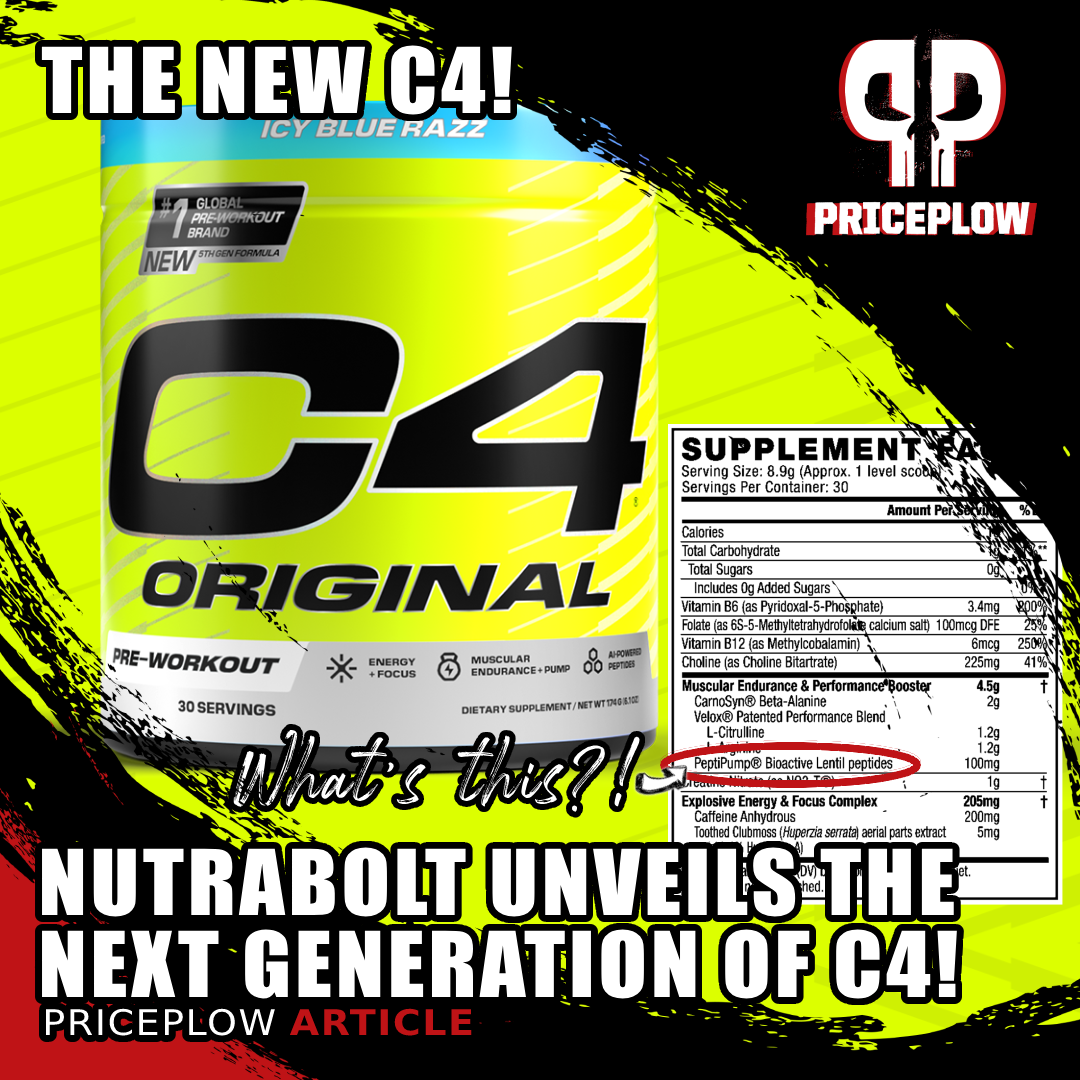
The new 2024 C4 Series is here from Nutrabolt, with a new C4 formula, new pump ingredient named PeptiPump, and a total of 7 pre-workout supplements!
This is one of the most impressive formulas we've seen in a very long time, and not just because it has the peptide double feature. The use of VELOX shows that someone at Nutrabolt really did their homework on maximizing the vasodilatory effect of citrulline and arginine. Plus, the nootropic blend here, with a dizzying array of niche alkaloids and ample neurotransmitter support, is absolutely top-notch.
We love that the pre-workout includes a 5 gram total yield, but doesn't ditch the creatine nitrate that C4's become so well-known for. The only thing you'll want to explore is another 1.25 grams of betaine somewhere, really.
But again, the peptides are going to really push this over the edge into outstanding territory.
To be honest, this formula would be a steal at almost any existing price point in the pre-workout category. A must try for 2024 and beyond.
Cellucor C4 Ultimate Strength – Deals and Price Drop Alerts
Get Price Alerts
No spam, no scams.
Disclosure: PricePlow relies on pricing from stores with which we have a business relationship. We work hard to keep pricing current, but you may find a better offer.
Posts are sponsored in part by the retailers and/or brands listed on this page.

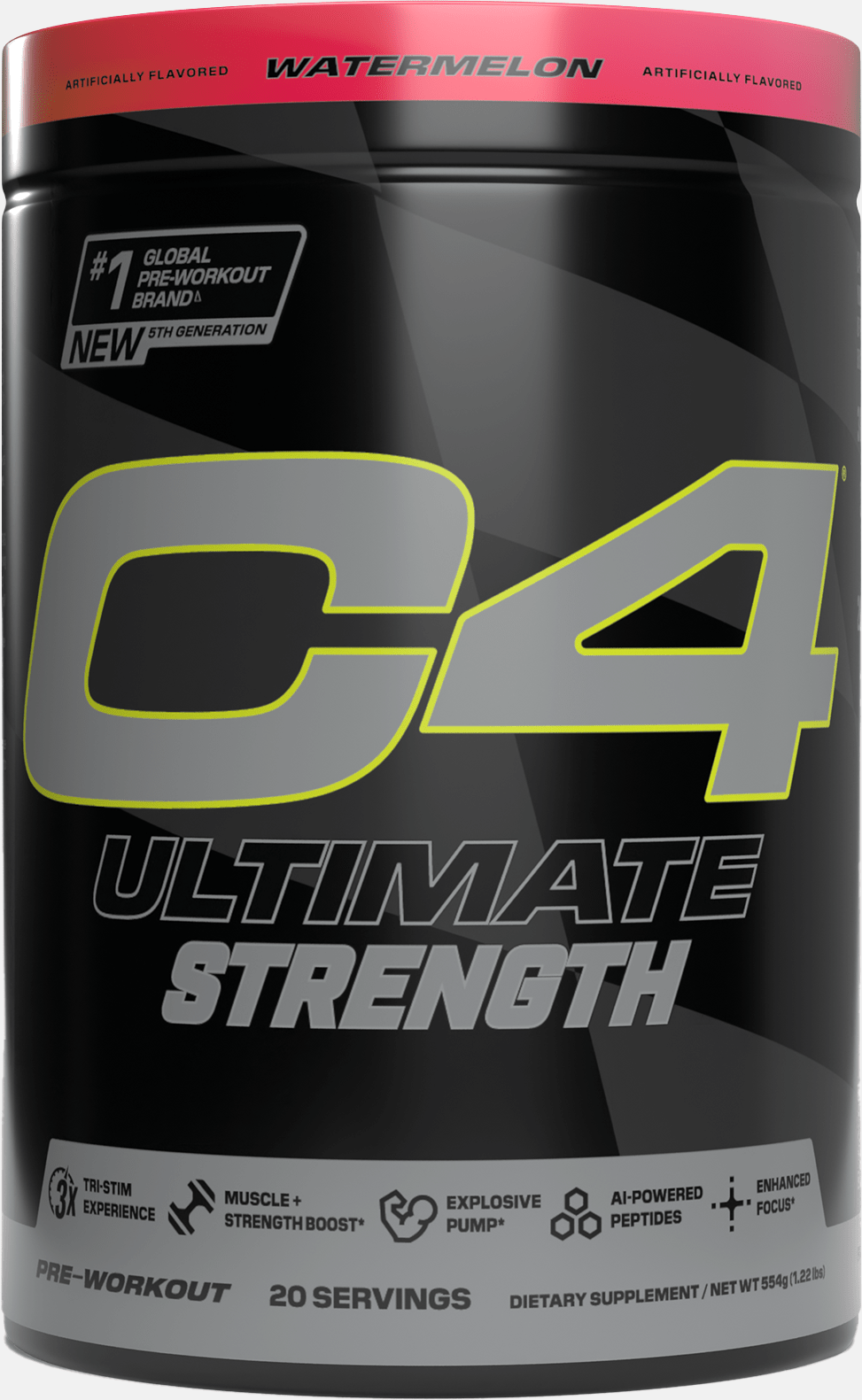

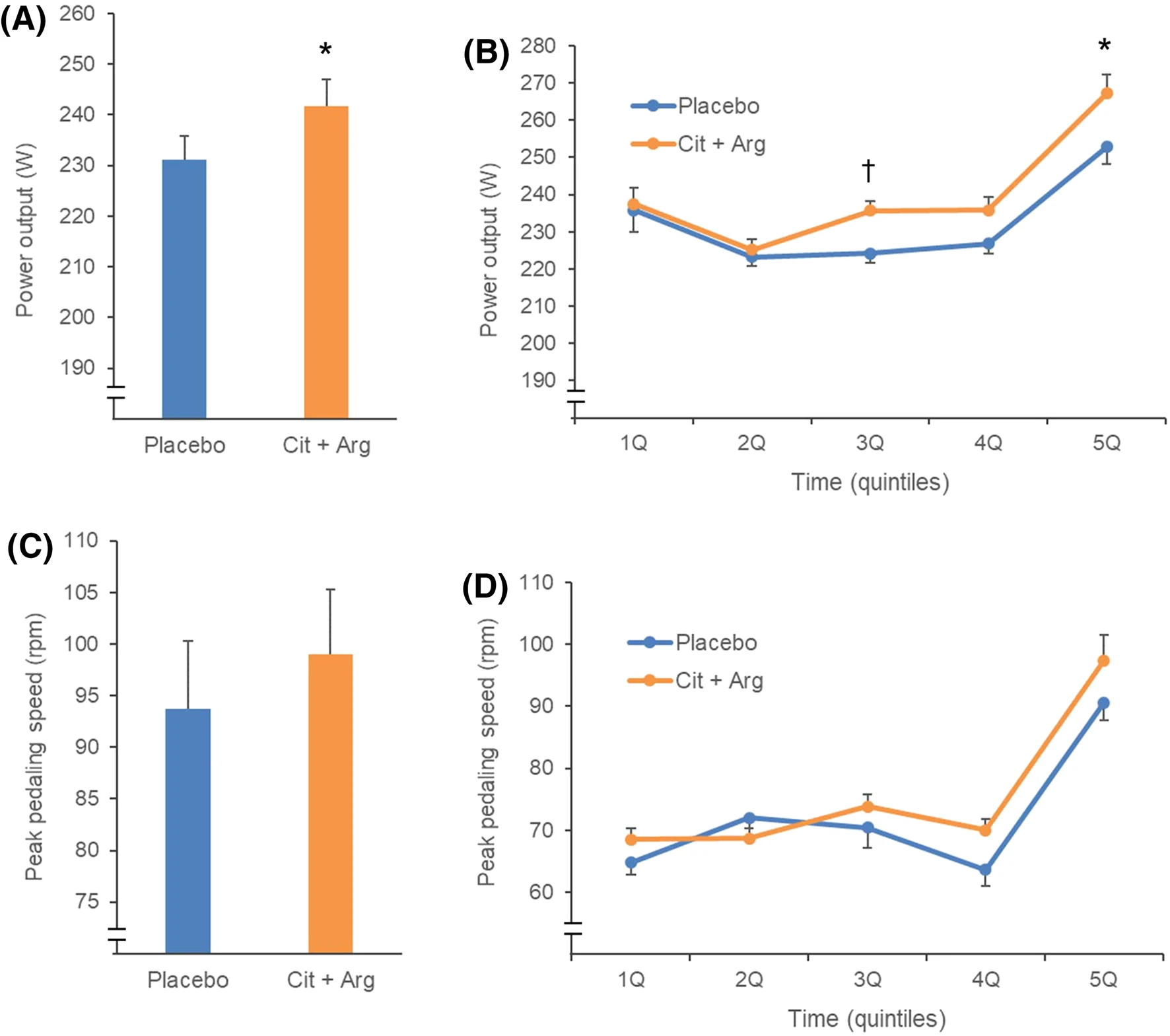

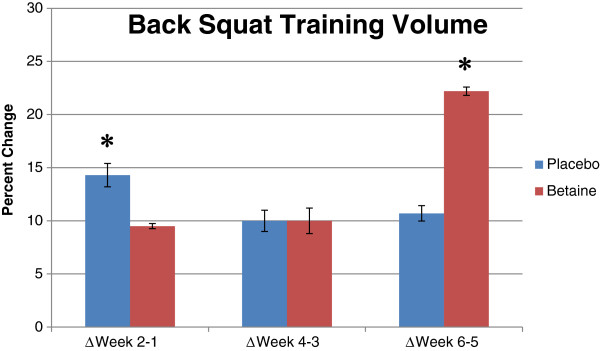
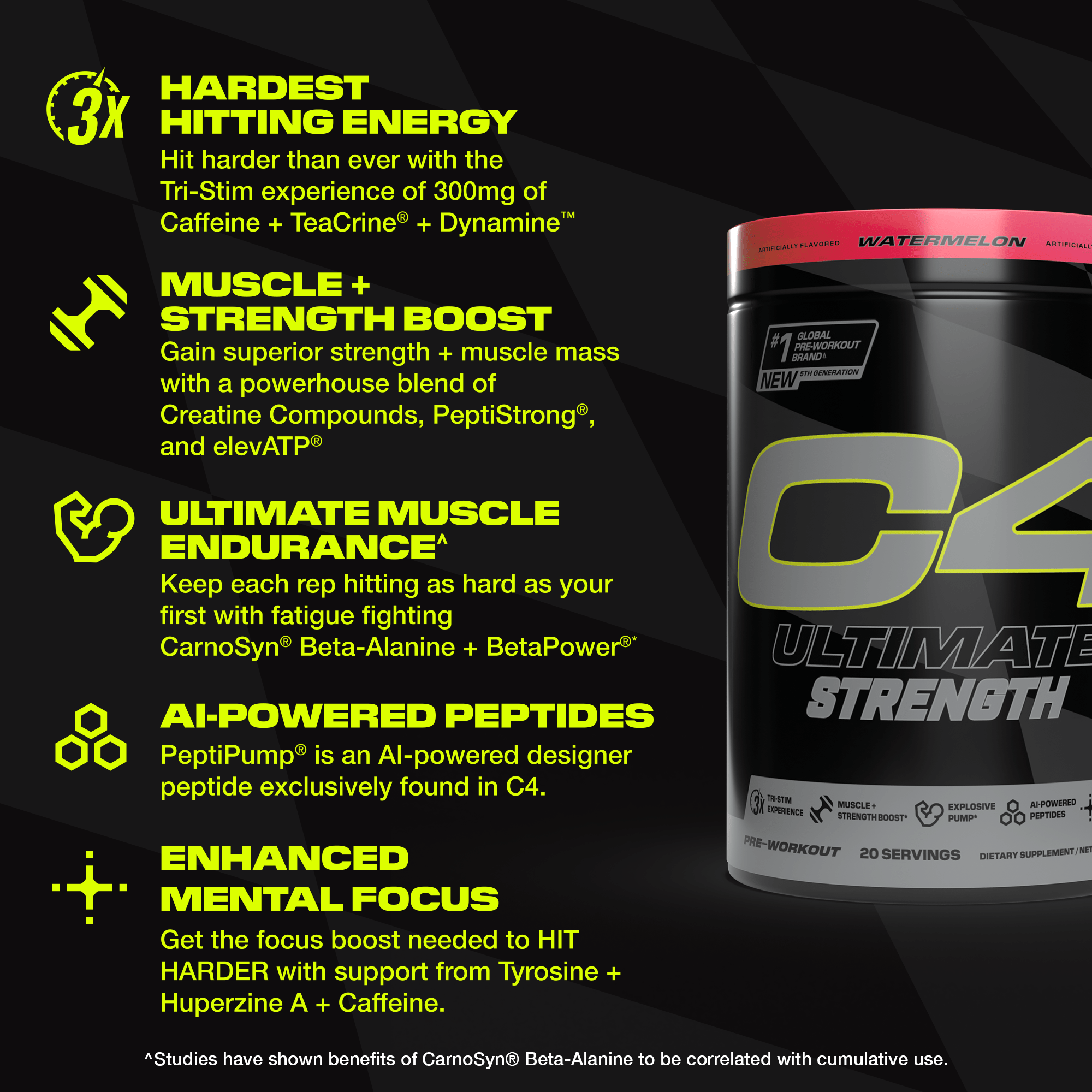
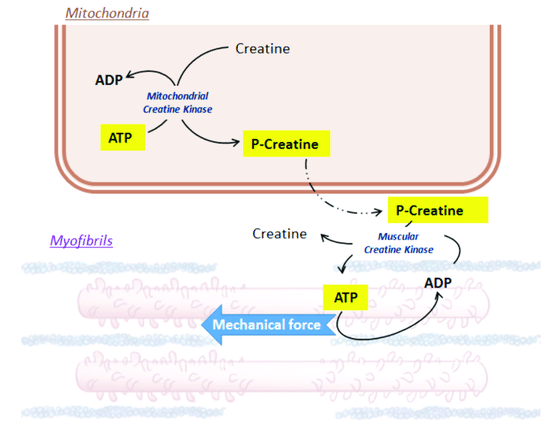
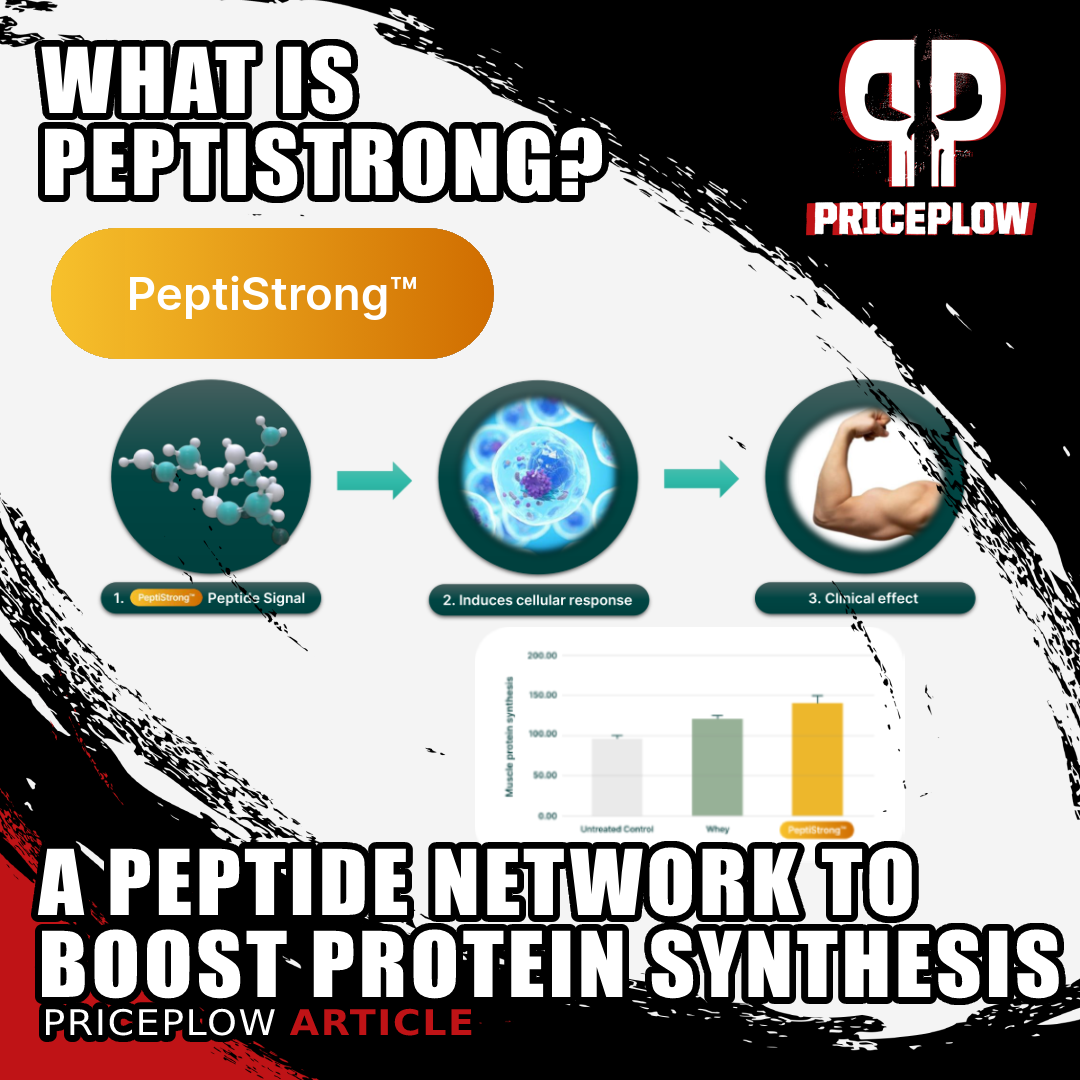




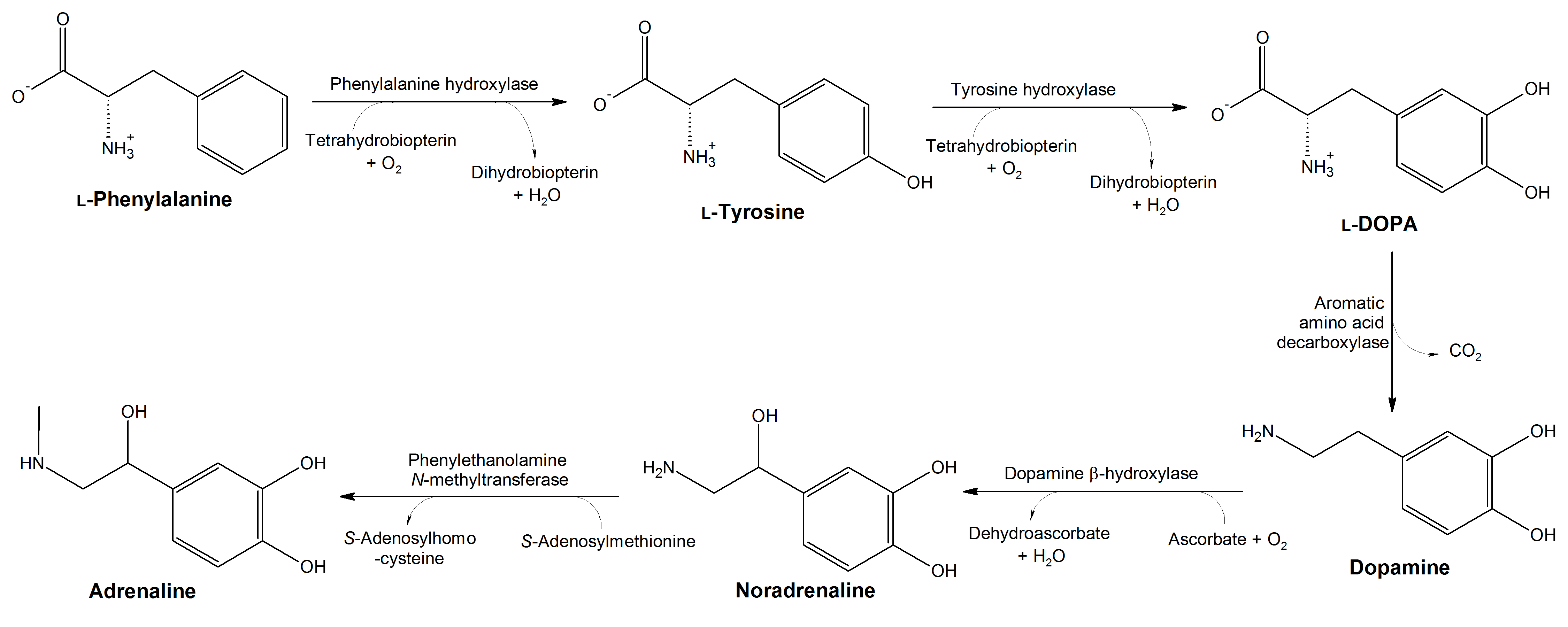
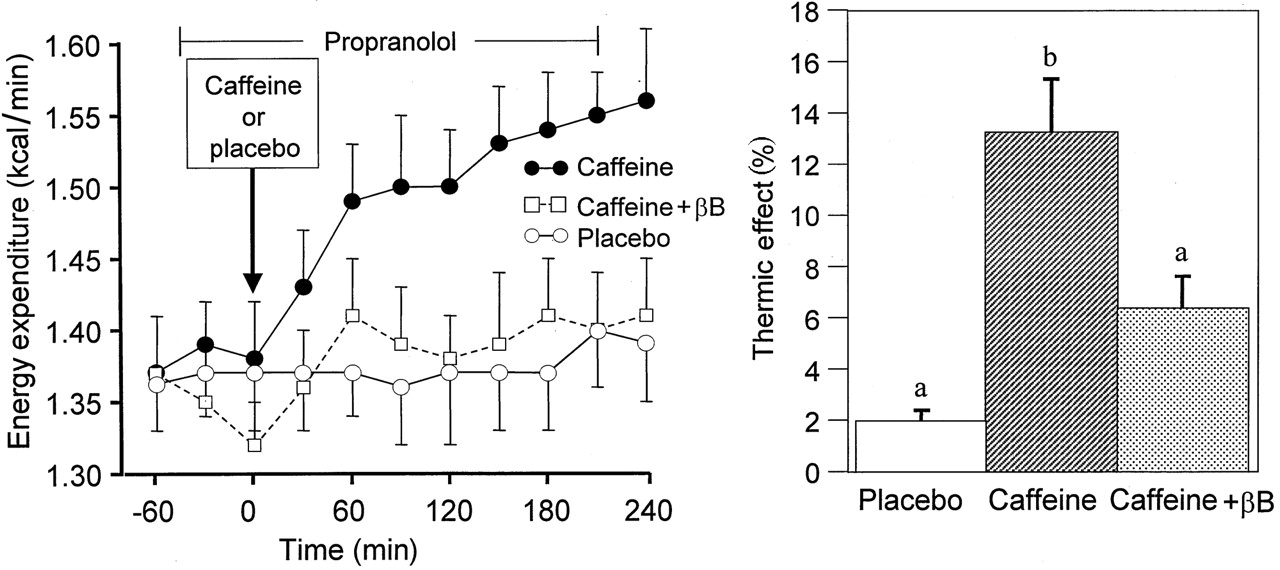
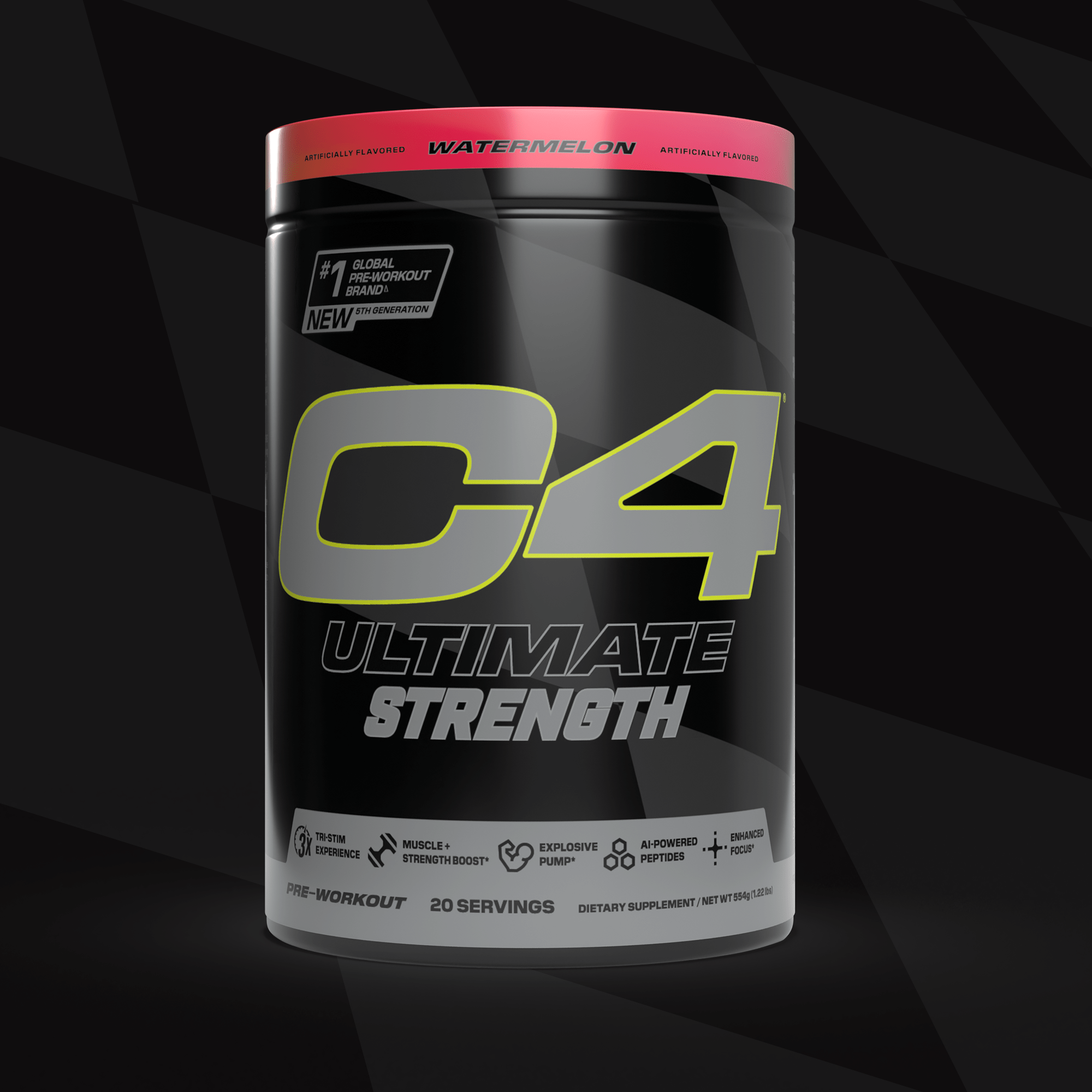
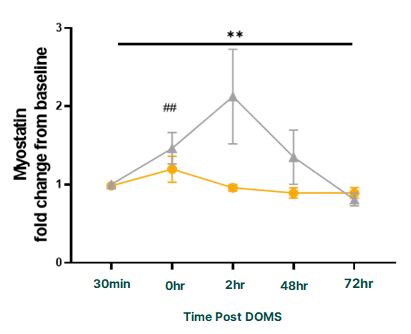
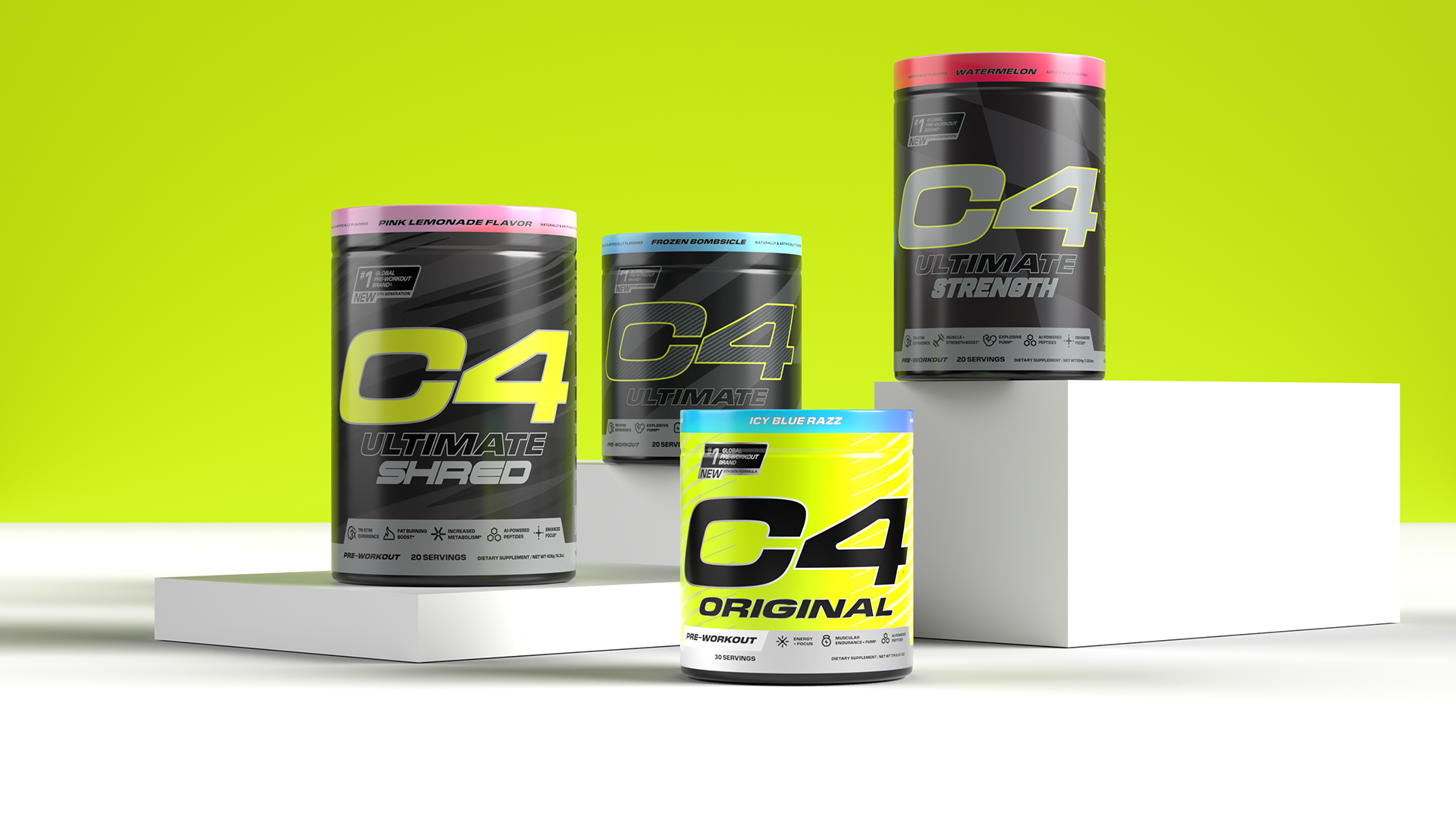
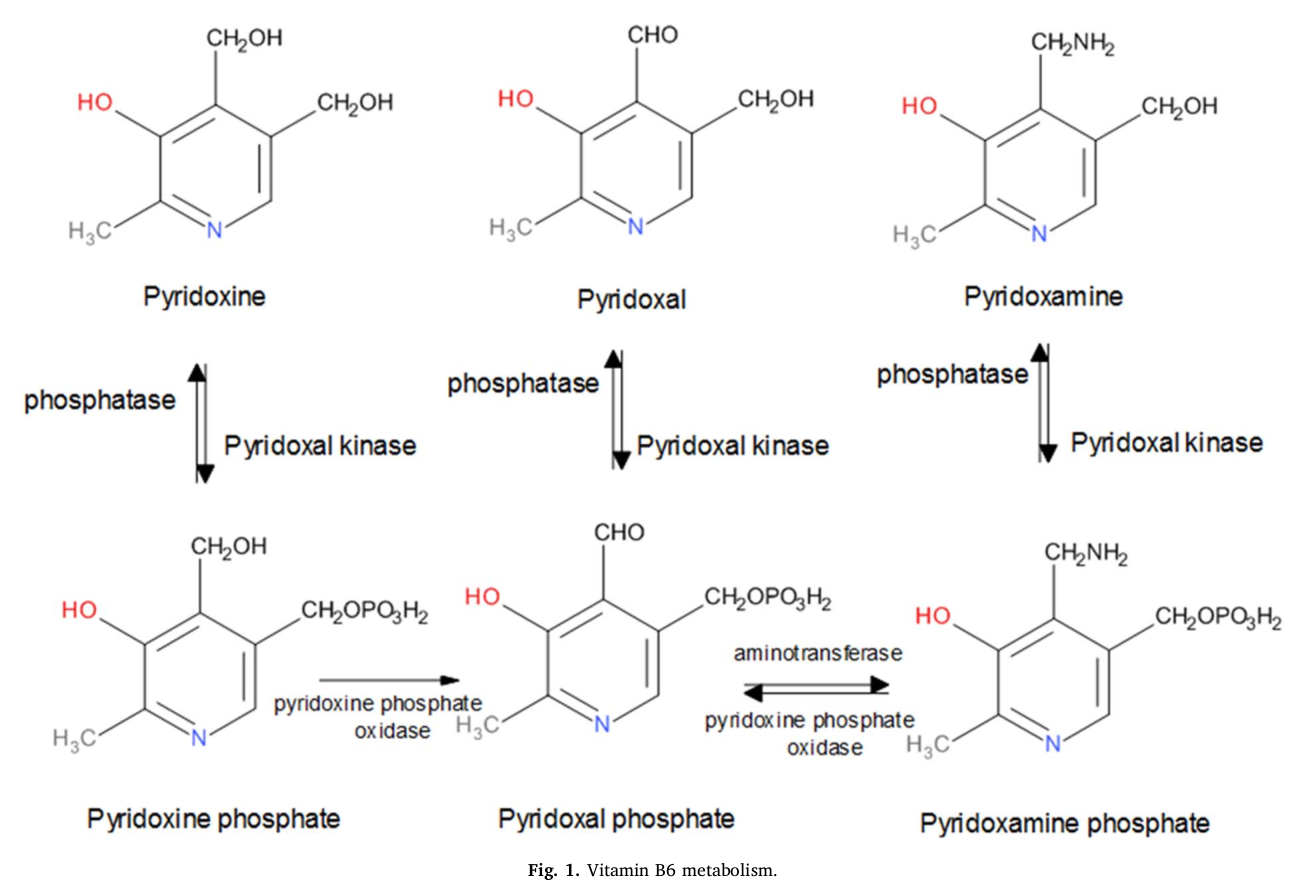




Comments and Discussion (Powered by the PricePlow Forum)